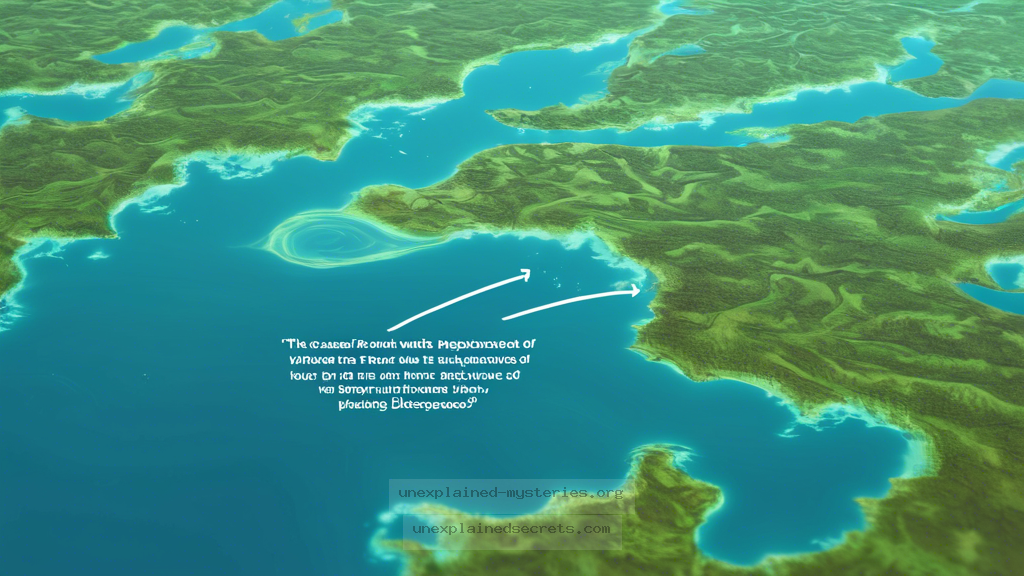What Causes the Mysterious Disappearance of Large Bodies of Water in Some Regions?
What Causes the Mysterious Disappearance of Large Bodies of Water in Some Regions?
The phenomenon of large bodies of water seemingly disappearing has puzzled scientists and locals alike for centuries. From the mysterious vanishing lakes of Mexico to the eerie cases of disappearing rivers, these unexplained events raise crucial questions about our understanding of natural science and the forces at play in our environment. This inquiry is not merely academic; it touches on climate change, geological activity, and even human intervention. Understanding these enigmas may provide insights into broader environmental changes that affect ecosystems and human life. In this blog post, we will explore the various aspects of this mystery, examining historical contexts, scientific theories, and ongoing research efforts.
Historical Context of Vanishing Water Bodies
The history of disappearing water bodies is rich and varied. One notable example is Lake Okanagan in British Columbia, Canada, which has been subject to legends of disappearance since the 1800s. The lake has been reported to have fluctuated dramatically in size, with some locals claiming that it has vanished completely at times. Another fascinating case comes from the Taal Volcano in the Philippines, where the crater lake has experienced significant fluctuation due to volcanic activity, raising questions about geological stability and the natural cycles of lakes.
Throughout history, similar accounts have emerged in various cultures. Mythologies often describe gods or spirits taking water away, reflecting the profound connection people have with their local environments. These stories serve not only as cultural narratives but also as cautionary tales about the fragility of natural resources.
Core Concepts and Theories Behind Disappearance
Several scientific theories explain why large bodies of water might disappear. The primary mechanisms include:
- Evaporation: In regions with intense heat, such as deserts, large lakes can evaporate significantly, leading to their apparent disappearance over time.
- Groundwater Seepage: Water may seep into the ground, especially in porous soils, which can drain lakes and rivers without leaving visible traces.
- Human Intervention: Dams, irrigation, and water extraction for agriculture can divert water flow, leading to the shrinking or disappearance of lakes.
- Geological Activity: Earthquakes or volcanic activity can reshape landscapes, causing lakes to drain or change course.
Understanding these mechanisms is crucial for managing water resources sustainably and mitigating the impact of climate change on our ecosystems.
Case Study: The Disappearance of Lake Poopó
One of the most striking examples of a disappearing body of water is Lake Poopó in Bolivia, which was once the country’s second-largest lake. Over the past few decades, Lake Poopó has shrunk to a fraction of its original size, primarily due to climate change and human activity. Factors such as changing rainfall patterns, increased water extraction for agriculture, and mining operations have contributed to this drastic change.
Notable Fact: Lake Poopó was home to diverse ecosystems and local communities that relied on its resources. The lake’s disappearance has led to significant ecological and economic consequences for the region.
The Bolivian government and various NGOs have initiated projects aimed at restoring the lake, but challenges remain due to ongoing climate issues and sustainable water management practices.
Practical Implications of Disappearing Water Bodies
The implications of disappearing lakes and rivers are profound. Not only do they affect local ecosystems, but they also threaten the livelihoods of communities dependent on these water sources. For instance, the loss of Lake Poopó has led to fishery declines, reduced agricultural productivity, and increased migration as locals search for alternative livelihoods.
Moreover, the disappearance of water bodies can lead to increased salinity in remaining water sources, affecting both agriculture and drinking water supplies. These changes can create a cascading effect on local biodiversity, as species adapted to specific aquatic environments face extinction.
Alternative Perspectives on Water Disappearance
While scientific explanations dominate discussions about disappearing water bodies, alternative perspectives also exist. Some indigenous cultures view these phenomena as spiritual messages or signs from nature, reflecting a deep-rooted relationship with the environment. This perspective emphasizes the need for a holistic understanding of ecological changes, integrating both scientific and cultural viewpoints.
Moreover, debates around climate change often invoke questions about responsibility and accountability. Are we, as a society, doing enough to address the root causes of these environmental changes? Or are we simply reacting to the symptoms of a much larger issue?
Common Misconceptions and Clarifications
Several misconceptions surround the issue of disappearing water bodies. One common belief is that these phenomena are always caused by climatic changes. While climate change is a significant factor, human activity often plays a decisive role. Additionally, some people might think that all disappearing lakes are permanent. In reality, natural cycles can lead to temporary fluctuations, especially in arid regions.
Clarification: Not every disappearing lake will vanish forever; many can return depending on seasonal changes and human intervention.
Understanding these complexities is essential for effective conservation efforts and for fostering a more informed public discourse about water management.
Best Practices for Investigating Disappearing Water Bodies
Investigating the causes of disappearing lakes and rivers requires a multi-disciplinary approach. Here are some best practices:
- Interdisciplinary Research: Collaborate with hydrologists, geologists, ecologists, and sociologists to understand the various factors contributing to water loss.
- Community Engagement: Involve local communities in research efforts, as they can provide valuable insights and traditional knowledge about the environment.
- Utilize Technology: Employ satellite imagery and remote sensing technologies to monitor changes in water bodies over time.
- Policy Advocacy: Work with policymakers to create sustainable water management practices that consider both ecological and human needs.
These practices can help create a comprehensive understanding of the issues at hand and guide effective solutions.
Future Developments and Ongoing Research
The study of vanishing bodies of water is an evolving field, with ongoing research focusing on climate change impacts, water management strategies, and ecosystem restoration. Scientists are exploring innovative solutions, such as artificial lakes and water conservation techniques, to mitigate water loss.
Moreover, the integration of indigenous knowledge in scientific research is gaining traction, offering a holistic approach to environmental stewardship. The adaptation of sustainable practices that honor both scientific and cultural understandings of water resources is crucial for the future.
Future Insight: As climate change continues to pose challenges, the importance of interdisciplinary research and community involvement will be key to understanding and addressing the mysteries of disappearing water bodies.
Conclusion
The mysterious disappearance of large bodies of water serves as a critical reminder of the intricate balance between nature and human activity. From historical cases like Lake Poopó to ongoing research efforts, the quest to understand these phenomena is both a scientific challenge and a call to action for sustainable water management. By embracing a multi-faceted approach that includes scientific inquiry, cultural perspectives, and community engagement, we can hope to solve the riddles of our vanishing lakes and rivers. 🌍💧
Other Articles
Recent Posts
- What Happened to Flight MH370? The Conspiracy Theories That Still Haunt Us
- What Secrets Lurk Within the Walls of the Infamous Trans-Allegheny Lunatic Asylum?
- What Evidence Supports the Existence of Bigfoot in the Pacific Northwest?
- What Happened to the Indus Valley Civilization? Unraveling the Mysteries of Ancient Urban Life
- Can Telepathy Be Scientifically Proven Through Laboratory Evidence?







